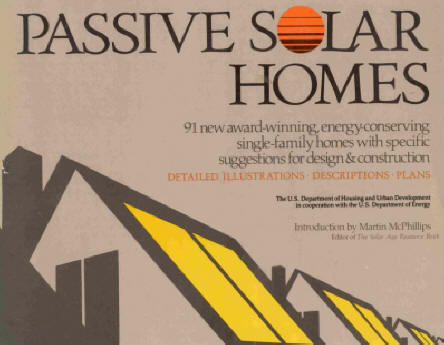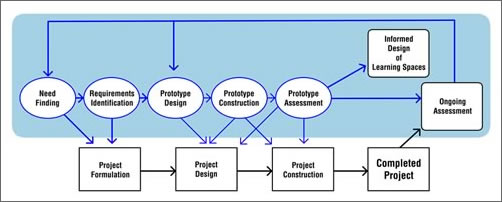Thursday, July 26, 2007
Code Like a Pythonista: Idiomatic Python
Good article in general. Also contains this gem:
Debugging is twice as hard as writing the code in the first place. Therefore, if you write the code as cleverly as possible, you are, by definition, not smart enough to debug it.
—Brian W. Kernighan, co-author of The C Programming Language and the 'K' in 'AWK'
Wednesday, July 25, 2007
Pushing the Boundaries of Design
Innovation often arises out of crossing disciplines and combining technologies. That's a focus of our look for the top cutting-edge designers"
Even After Apple, Designers Dig Jobs
IT's Star Turn
The information technology departments once seen as back-room cost centers are becoming key players in the execution of innovation, and hence, the creation of value in the new marketplace.
Are members of your IT department full-time members of innovation project teams? Or do they exhibit a "call me when you need me" approach? Or worse still, a "Put your request in the queue, I'll get to it when I can" attitude?
Based on my research, the majority of IT departments sit on the sidelines of innovation discussions when they should be central players. Systems consultants as well as corporate representatives say that, typically, IT departments are tactical rather than strategic, reactive rather that proactive, and isolated rather than integrated. Few in the IT ranks speak "business model," which is unfortunate given that so much customer and shareholder value is dependent on IT solutions to facilitate critical network connections.
Available Plastics PVC Pipe Square Octagon Flued Slotted
“With our massive amount of PVC pipe and tube extrusion tooling we can virtually make any size telescoping round series that you need. Please email us your requirements, send us a fax or just give us a call!”
Telescoping Round, Telescoping Square, & Telescoping Octagon
Available Plastics is a custom PVC Extrusion Company that can make virtually any size pipe, tube or profile that you need. If the telescoping sizes listed above don’t meet your requirements, please email us your requirements, send us a fax or just give us a call!
Available Plastics, Inc.5020 Beechmont Drive
Huntsville, Alabama 35811
(800) 633-7212 - (256) 859-4957 - Fax: (256) 851-7723
E-Mail: sales@apiplastics.com
Tuesday, July 24, 2007
Using the ‘Beauties of Physics’ to Conquer Science Illiteracy - New York Times
A. I have the students read the text before the lecture. This is standard practice in the humanities, but a heresy in science. I don’t know why. I think perhaps science professors like to “present” material.
In my class, we talk about the applications of physics in everyday life. The lectures are broken up with these “concept tests,” where the students move into groups to work on a physics problem together. They talk, argue — they teach each other. "
You don't know what's in / Anaheim. / Why don't you come with me (little girl) / on a magic carpet ride?: Network Performance Daily - Network Performa
You don't know what's in / Anaheim. / Why don't you come with me (little girl) / on a magic carpet ride?

At this year's NetQoS invitation-only Networkers After-Party at the House of Blues in Disneyland Anaheim, we're going to bring you what we call the Netcosm Immersion Experience.
The Netcosm Immersion Experience will take our Netcosm tech demo and project it on the inside of a walk-in cube on the dance floor of the House of Blues - 25 feet by 35 feet, 10 feet tall. (Okay, that's a not exactly a cube, but why get pedantic?)
It will be a full immersion video experience with sights, quadrophonic sounds, colors, and the digital pyrotechnics, navigable with a gyromouse. And the experience will be enhanced with "Netcosmopolitan" drinks. (They're just like regular cosmopolitans, except blue, with a dash of portmanteau added for flavor.)
If you're attending the NetQoS Networkers After-Party, you'll be able to literally walk inside a living model of an enterprise network.
(We do not suggest partaking of any illegal narcotic substances before or during the Netcosm Immersive Experience. The Netcosm Immersive Experience is simply enough to blow your mind and alter your reality without any pharmaceutical assistance. Besides, the last stoner I knew who went to Disneyland still has nightmares about "six-foot-tall rats".)
(Continued...)
This is in addition to the food and live music performed by Blues Gone South. We'll provide shuttle service to and from the House of Blues and the Anaheim Convention Center from 7:00 p.m. until midnight so you can relax and enjoy the fun.
In case you need a reminder of what Netcosm is, allow me to explain: Netcosm provides a three dimensional, animated model of network traffic. It's part of the NetQoS Performance Labs' efforts at finding ways to display complex network monitoring information visually.
Human brains are hardwired by evolution to react to light, sound and motion, and while detail can be found by looking at charts and graphs, Netcosm is designed to give people instant information that registers immediately. When the model's network packets explode and a server icon starts smoking and later goes up in flames, you know you have a problem without even having to think about it. (There's a part of the "reptilian hind brain" that goes, "Fire bad!" And sometimes, after long slogs at the data center fueled only by caffeine, determination, and rage, the reptilian hind-brain is the only part of the brain functioning at peak efficiency.)
And of course, by adding an "aspect of play" to network traffic data you lower the cognitive burden, and make network data something people want to spend time with and examine, rather than something they dread looking at day after day. And yes, the fact that we're bringing an "aspect of play" to Networkers at Disneyland is no coincidence.
The Netcosm project was created by Dr. Mike Johns, and the Netcosm Immersion Experience extension of that work is based on the work of Dr. John Schull, associate professor of IT at the Rochester Institute of Technology, and some of his students.
----------
More Information:
On Netcosm:
Downloadable Netcosm network monitoring clip
You've never seen a networking tool like this. (Unless, of course, you've seen TRON).
Being Tron Malkovitch - or This is your brain on Netcosm
In Xanadu did Kubla Khan/A Network Monitoring Dome Decree - RIT professor displays Netcosm on 12' immersive dome.
Rethinking Network Monitoring: The Re-Juvenilization of IT
Monday, July 23, 2007
Hugg / Clean Energy Goes Global with ETF
Powershares has introduced a Global Clean Energy (PBD) exchange-traded fund which tracks the WilderHill New Energy Global Innovation Index.
Sunday, July 15, 2007
Yard Goods from Alaska Tent and Tarp

email: information@alaskatent.com
Call us: 800.478.8368
Insulation Solutions :: Insul-Tarp :: Under Slab Insulation

WHY INSUL-TARP® WORKS...
Insul-Tarp®'s innovative combination of layers enable it to effectively control all three modes of heat transfer -- Conduction, Convection and Radiation. In a heated slab, Insul-Tarp® improves the performance of the radiant heating system and provides higher slab temperature output.

Rocky Mountain Institute : Library
- E04-19, Home Energy Brief #9, Whole System Design (PDF-200k)
- This Brief introduces the powerful tool of whole system design within the context of the building envelope—introducing the synergies that exist between thermal mass, windows, and other components of passive solar design. Whole system or integrated building design actively considers the interconnections between systems, occupants, and the environment, and uses these connections to develop single solutions to multiple problems (shelter, energy savings, aesthetics, natural daylight, indoor environmental quality, affordability, etc.) (28 October 2004).
Solar thermal energy for housing
An entirely passive 100% solar-heated bungalow
David Delaney
October 31, 2003
revised February 18, 2004
ddelaney@sympatico.ca
For later, better, designs, see
1) Thermosyphon solar air heater and attic heat store for 100% solar heating
2) Passive solar heating system with high-temperature heat-store wall and air-to-air heat exchanger
THIS $30 SOLAR SETUP HEATS A 30 X 40 WORKSHOP FOR FIVE HOURS OR MORE EVERY SUNNY WINTER DAY
"For a super-simple and super-inexpensive solar heating system that really works," say Don R. and George Waterman of Springfield, Missouri, "you only have to follow four rules. One, glaze with low-cost plastic film instead of glass or plexiglass ... two, use a structure's existing south-facing wall for the back of your collector ...
Passive Solar Energy -- The Homeowner's Guide to Natural Heating and Cooling
Passive Solar Energy Book
"Passive Solar Energy -- The Homeowner's Guide to Natural Heating and Cooling", Bruce Anderson and Malcolm Wells.
This very well written book covers:
-
Passive solar energy basics for heating and cooling
-
Passive solar energy design for heating and cooling
-
Explanations for how solar windows, solar chimneys, solar mass walls and solar roofs work
-
How to construct solar windows, solar chimneys, solar walls and solar roofs
Click on the blue boxes ... to download
chapters of the book. Don't miss the "color photo" and "construction details" sections.
...
Sunroom, Greenhouse and Skylight Plans
 |  |
This plan set shows you how to build glass walled sunrooms with a glass roof, large site built skylights in a standard roof, and large fixed glass windows anywhere in the house. The plans make use of inexpensive double glazed tempered glass panels (commonly available for sliding glass doors).
A key to this simple glazing system is a special aluminum-coated butyl rubber sealing tape designed for severe waterproofing conditions(sample included with your plans). This tape was developed for sealing modular buildings on the North Slope oil fields of Alaska. It allows you to build large leak-proof skylights and window walls using standard wood working tools. The system is easy to build and is forgiving of errors. It is also less costly than commercial glazing systems. Plans include a sample of the tape and how to order by phone or Internet. It comes in standard 3 and 6 widths and can be special ordered wider if needed. The 3 width is used for the details in the plans.
on AIR Bus Tour : Tour Dates
| Pittsburgh, Pennsylvania | John Heinz History Center | Night | 17:15 - 22:15 | Open | Aug 17 |
| Washington, DC | The State Theater | Day / Night | 9:15 - 21:30 | Open | Aug 20 |
| Baltimore, Maryland | Frederick Douglass Maritime Park | Night | 17:15 - 22:15 | Open | Aug 21 |
| Philadelphia, Pennsylvania | The Franklin Institute | Night | 17:15 - 22:15 | Open | Aug 22 |
| Boston, Massachusetts | Artists for Humanity EpiCenter | Day / Night | 9:15 - 21:30 | Open | Aug 24 |
| New York, New York | 87 Lafayette Firehouse | Day / Night | 9:15 - 21:30 | Open | Sept 24 |
| Toronto, Ontario, Canada | Guvernment & Kool Haus | Day / Night | 9:15 - 21:30 | Open | Sept 26 |
The Voidspace Techie Blog

Resolver is a 'rapid application development tool', for analysing and presenting business data using a familiar 'spreadsheet interface'.
From a superficial glance it looks just like another spreadsheet program, but it is radically different from conventional spreadsheets.
It is written in IronPython and has Python integrated in a special way. Before I launch into my best attempt at an explanation, I suggest you visit my new site:
*
Resolver Hacks
Fun, interesting and useful things to do with Resolver. (Screenshots and code included!)
Spreadsheets are actually a form of programming, in fact when programmed with formulae in cells they are actually an example of a slightly esoteric form of programming called 'functional programming'. So as spreadsheets are just interfaces to computer programming ('under the hood'), shouldn't it be easy to reorganise or extend spreadsheets with a programming language? Unfortunately, this is often a painful process - particularly as the means for doing this are usually 'bolted on' rather than being a core part of the spreadsheet.
With Resolver, data and formulae you enter into cells are actually turned into code. This code is then executed to produce the results.
"
Saturday, July 14, 2007
Red Sky Shelters : Red Sky Shelters :Home of the Yome
One of the best features of a Yome is the filtered light that passes through the wall to bathe the interior. Other manufacturers offer reflective foil insulation for the walls. But to cover the walls with an opaque material would make the Yome dark, particularly in Winter when light is most welcome. Instead, we offer panels of a recycled P.E.T. dacron fiberfill insulation encased in lightweight, fire resistant, acrylic-coated polyester Odyssey fabric. These translucent triangular panels tuck behind the side wall poles thus sealing on all sides to stop airflow. Insulating in the same manner as a sleeping bag, they naturally puff out from the side wall creating several inches of insulative air space.

28x36 STOR MSTR OPEN END12.5ozCLR SKYLIT
28x36 STOR MSTR OPEN END12.5ozCLR SKYLIT
Please Note: Closeouts are one of a kind, last one, slightly damaged/missing parts, special pricing, remnants or returns. All products are sold as is and carry a 30-day return policy. Images are shown for representation only. If image is missing or more information is needed, please use the "Contact Us" and reference the item number listed above.
Product Specifications
| Weight | 1950.000 |
| Availability | Manufactured Product - Available in 8 days |
| Instructions | Instructions (PDF Format) |
| Warranty | Warranty Document |
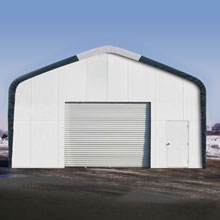 |
William A. Wulf - National Academy of Engineering - Determined to Reinspire a Culture of Innovation - New York Times


Determined to Reinspire a Culture of Innovation
WASHINGTON — Like everyone else, William A. Wulf understands the importance of innovation in the American economy, and how innovation depends on an educated workforce and abundant spending on research.
But learning and investment are not enough, Dr. Wulf says. An innovation economy depends on intellectual property law, tax codes, patent procedures, export controls, immigration regulations and factors making up what he calls “the ecology of innovation.” Unfortunately, he argues, in the United States too many of these components are unworkable, irrelevant, inadequate, outdated or “fundamentally broken.”
He would know. For 11 years, Dr. Wulf, a researcher and entrepreneur of computer science, was president of the National Academy of Engineering, the engineering arm of the National Academy of Sciences and the nation’s pre-eminent organization of innovators. In that time, it seems, his reputation among his fellow engineers has only grown — they call him variously a good guy, a great guy, a brilliant guy and even “the best guy in the world.”
As Ed Lazowska, a computer scientist at the University of Washington, put it, “he has been a huge statesman for the engineering enterprise.” In the process, he said, Dr. Wulf greatly increased the prominence of the engineering academy, chartered by Congress to offer scientific and technical advice to the government.
He did this in part, colleagues say, by starting programs to encourage students to enter engineering, and establishing prizes to reward high engineering achievement. More than that, people like Dr. Lazowska say, he encouraged the academy to issue hard-hitting reports that sometimes challenged government positions on code-breaking, the importance of classifying research, and other security issues.
As he left office last month, Dr. Wulf began a project he said he hoped others would join him in — repairing the nonfunctioning elements of America’s ecology of innovation and building mechanisms to foster creative thinking and invention as science and technology advance.
“Even if we fixed every one of the components of this innovation ecology to be just right for today and tomorrow, they probably would not be a week hence,” he said in an interview before he left office. “At least every once in a while we should stand back and say what was the intent of intellectual property protection, what was the intent of the export control regime, what was the intent of antitrust? And in the light of today’s technology, what’s the best way to achieve that?”
He has been asking these questions a lot lately: they were his subject at a recent forum held by the American Association for the Advancement of Science and in a guest editorial in the journal Science.
Consider antitrust laws, he suggested at the forum. They were developed in the late 19th century, “in the context of the economic theories of the time.” But today, many of those assumptions are irrelevant. When it comes to word processing software, for example, he said, the wide use of a particular product — Microsoft Word, say — may pay more dividends than encouraging the production of myriad competing programs. Microsoft Word software may not be the best or the cheapest but he uses it anyway, “because there is a really good chance that if I create a doc file and send it to anybody, they’ll be able to open it up and edit it and send it back to me. It is the ubiquity of Word that makes it valuable.”
This is not to say that we should embrace inferior products, he said, but regulators should recognize that disregarding the value of ubiquity can work against innovation.
Or take what he called “the idiocy” of enacting short-term tax credits for research and development. “R and D takes many years,” he said. “If companies invested this year to take advantage of the R and D credit and then the next year it went away, they would have to stop the research and they would have wasted money.”
He says this is why corporate leaders tell him “with near unanimity” that tax credits have little influence on their decisions.
Then there is the drug approval process at the Food and Drug Administration. It typically relies on clinical trials involving hundreds or thousands of patients, in which new drugs are compared with existing ones. If the promise that medicines will be devised to suit a particular patient’s particular ailment is fulfilled, he said, that kind of testing will be impossible — and irrelevant.
For the third year in a row, Congress is confronting patent laws, which Dr. Wulf describes as relics of the days when patents were awarded for things inventors could construct as scale models and submit to patent examiners. “It would be surprising if that system, designed for that purpose, was ideally suited to software or snippings of DNA or business practices,” Dr. Wulf told the A.A.A.S. forum. He added that in an era when technologies may become obsolete well before their patents expire, “the current patent system is at best irrelevant and in some cases counterproductive.”
The United States has already ceded its dominance of mass production manufacturing to low-wage countries, and unless something is done to improve the ecology of innovation, Dr. Wulf said, the nation will lose its chance for a comeback in what he calls the coming age of mass customization. “This is a knowledge-intensive kind of manufacturing,” he said. “It will not be done by low-wage labor.” But, he went on: “What worries me is we’re not thinking of what the ecology is that would capture that kind of manufacturing. We have the ability to become the greatest manufacturing country in the world, but we are not doing anything about it.”
Dr. Wulf says he regrets this not just because of its implications for the nation’s economic future, but also because it means fewer people will experience what he calls the “thrill” of innovating, of inventing something elegant and useful, something he first experienced as an undergraduate.
Dr. Wulf, 67, who was born in Chicago and who comes from a family of engineers, said his “eureka moment” occurred when he was a physics major at the University of Illinois and had a summer job at a Chicago engineering firm. One of his group’s projects was a machine that read telephone numbers from holes punched in plastic cards. Now and then cards would jam and the machine would break, much to the irritation of the people who used it.
So he watched the machine at work. “I can remember looking up and thinking, ‘I know what it is,’ ” he recalled in an interview. “I mocked up the solution with cardboard and drafting paper. It was inexpensive, it was easy to modify and it was foolproof.”
His innovation won praise from colleagues and a bonus in his check. But the real reward, he said, “was that moment of creation, that moment of seeing the problem and seeing a solution.” He said, “once you have had the creative thrill of designing something that solves a real human problem and that people use, it’s addictive.”
Before long, he had a master’s in electrical engineering from Illinois, a doctorate in the then-new field of computer science from the University of Virginia and a teaching job at Carnegie Mellon University. There, he began research eventually spun off as Tartan Laboratories, which makes devices that translate C, Pascal, Fortran or other programming languages into “machine language,” instructions a machine can execute.
“As a researcher, he is utterly first-rate,” Dr. Lazowska said.
After Tartan was sold to Texas Instruments in 1995, Dr. Wulf worked for two years as assistant director of the National Science Foundation, where he led its efforts in computer science and information engineering, and then took a teaching job at the University of Virginia. All the while, he was working more or less in parallel with his wife, Anita Jones, who is also a computer scientist, and also a member of the Academy of Engineering. The couple, who celebrated their 30th anniversary last month, have two daughters and four grandsons.
They were on the faculty of Carnegie Mellon together, and when they started Tartan he was chief executive and she was vice president for engineering. He worked at the National Science Foundation, and she was director of defense research and engineering at the Pentagon (unfortunately not always at the same time). And when he moved to the University of Virginia, she was his department head. He will work for her again when he returns to the university in the fall.
His wife’s accomplishments underline the importance of bringing more women into engineering, Dr. Wulf said, adding that the number of women in the Academy quadrupled during his tenure as president. But he added, “the bad news is we have gone from 1 percent to 4 percent.”
His argument for diversity is not based on fairness, but rather on the value of bringing diverse social and cultural perspectives to the design of products and procedures that will be used by diverse people around the world.
There are elements of culture that form an important part of the ecology of innovation, and here, Dr. Wulf says, the United States has advantages and disadvantages.
One big advantage is that innovating something and seeing it fail carries much less stigma here than it does in other countries. “In almost every other country in the world, certainly in the Far East, the social cost of failure is enormous,” he said.
On the other hand, he said, there is widespread ignorance of science and technology. “Here we are with 90 percent of the population incapable of intelligent conversation about some of the most important policy issues of the day,” he said.
Dr. Wulf said he was eager to appear before the A.A.A.S. and write his editorial in Science not because he knows how to fix the ecology of innovation but because “this is not something people have been talking about.” He said, “I want to get a lot of smart people thinking about it.”
DuPont™ Tyvek� ThermaWrap™

Increasing installed R-value of a wall system
Nearly two-thirds of the total heat lost or gained through the building envelope occurs through radiant heat flow.
DuPont™ Tyvek® ThermaWrap™ helps to regulate the radiant energy of wall systems for increased comfort and reduced energy costs. In winter, DuPont™ Tyvek® ThermaWrap™ helps keep radiant energy that’s accumulated in the wall sheathing from releasing to the exterior. In summer, the metalized surface reflects radiant heat out of the wall, helping to keep the interior cooler. Reducing radiant heat flow through the wall system is particularly important at the studs, plate lines, joists and headers where conductive heat flow through the wall is the greatest. This not only saves energy and reduces heating and cooling costs, it also changes the dew point in the wall to help reduce the risk of condensation which can lead to mildew, mold and wood rot in wall cavities.
RadiantGUARD®
RadiantGUARD® radiant barrier products are high quality, double-sided, tear and puncture resistant radiant barrier products of higher quality than many of the other radiant barrier products in the marketplace. All RadiantGUARD® radiant barrier products meet the Standard Specifications for Sheet Radiant Barriers for Building Construction Applications ASTM C1313 and the State of California Title 24 Insulation Standards.
RadiantGUARD® radiant barrier products are available in "Standard", "Premium", and "Ultra" grade versions. Need help in deciding which radiant barrier grade you need?
RadiantGUARD® radiant barrier reflective foil insulation bubble products consist of one or two layers of bubble material laminated between layers of aluminum foil to provide excellent thermal resistance in a home insulation radiant barrier product. The bubble contains an air retention layer designed to provide increased strength and puncture resistance. The bubble layers provide a greater reduction of heat transfer. We offer various widths and versions with tabs for easier installation.
Most common applications for these radiant barrier bubble insulation products include pole barns, post and frame wall, metal building wall, post and frame attic, metal building roof, and agricultural buildings.
All our radiant barrier reflective foil insulation products can be reviewed and purchased online. For large volume, pallet and container shipment volume quotes, please contact us.
Tyvek� Hard Structure - Material Concepts, Inc.
Hard Structure Tyvek® Rolls - Style 1016
Style 1016 Tyvek® rolls are used for murals, theater backgrounds, photo backgrounds, and other applications where wide widths are necessary. These Tyvek® rolls are significantly lighter than traditional fabrics or papers. Hard structure Type 10 Tyvek® styles have a smooth slick surface with a very low coefficient of friction. They are easy to handle, lightweight, strong, and durable. Style 1016 is not suitable for printing.
Style 1016 Tyvek® rolls are available as follows:
- 120”x200 yard rolls
- 120”x50 yard rolls
- 84”x200 yard rolls
- 74”x200 yard rolls
- Master rolls also available
- We offer custom sizes
TrustedReviews - Matrox Extio - Remote Multi-Display System
| Author | Riyad Emeran |
| Published | 10th July 2007 |
| Manufacturer | Matrox |
| Price | £1,400.00 (Exc VAT) |
| as reviewed | £1,645.00 (Inc VAT) |

This is where Matrox comes in with the Extio, which offers secure remote access, complete with multi-screen display options. The Extio itself is a small metal box that sits on your desk – it’s completely silent, with no fans or moving parts and even the amount of heat it generates is minimal. At it’s most basic level the Extio is an external version of one of Martox’s quad-head graphics cards, but there’s a little more too it than that – I did say that the Extio offered remote access after all.
What makes the Extio really interesting is that the box on your desk is connected to a workstation that can be up to 250m away from you, using fibre optic cabling. This means that a company can have a secure, disaster proof data room, where all the important hardware is kept safe, but the users can still access their machines seamlessly, as if the PC was sitting on their desk.
Learning Spaces | Resources | EDUCAUSE
Learning Spaces

Space, whether physical or virtual, can have a significant impact on learning. Learning Spaces focuses on how learner expectations influence such spaces, the principles and activities that facilitate learning, and the role of technology from the perspective of those who create learning environments: faculty, learning technologists, librarians, and administrators. Information technology has brought unique capabilities to learning spaces, whether stimulating greater interaction through the use of collaborative tools, videoconferencing with international experts, or opening virtual worlds for exploration. This e-book represents an ongoing exploration as we bring together space, technology, and pedagogy to ensure learner success.
Marker Boards, Wireless Access, and Technology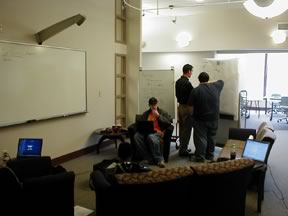
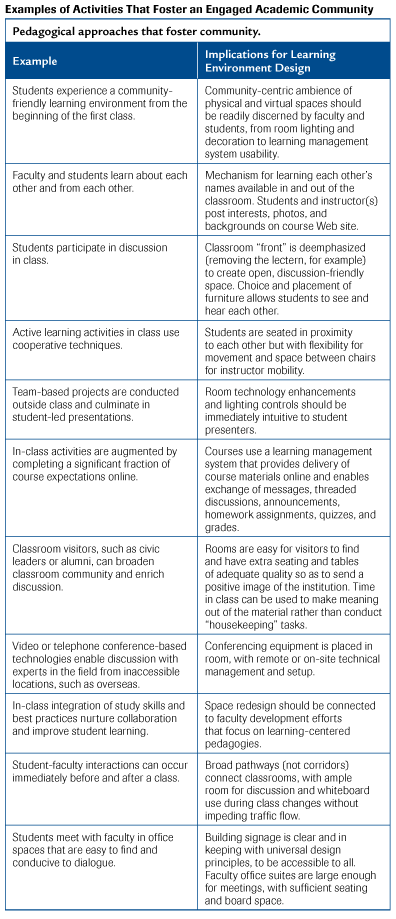
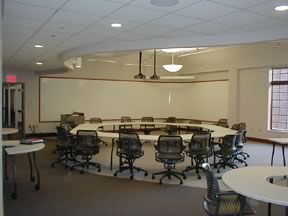
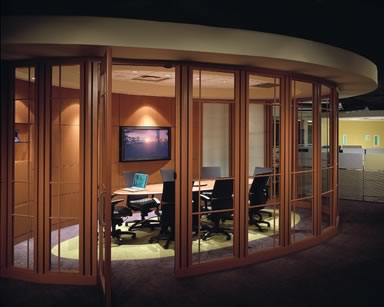
Initiate Active Prototyping Programs
Existing design practice has an unfortunate byproduct: learning space technologies typically are purchased and deployed in a single linear process. Building committees often make decisions about what technologies to deploy throughout a new building without having an opportunity to try them on a more limited scale. A better approach would establish an ongoing program of structured prototyping and evaluation that iteratively tests new ideas and technologies in a series of experimental and then operational settings. Prototypes provide tacit knowledge not available in a theoretical design. In the near term, prototyping might take the form of critical function prototypes, in which a particular capability or subsystem is deployed and tested early in the design process or while the building is under construction. Feedback from this trial would then influence the system design work later in the project life cycle.
In the long term, more substantial changes are needed. Sustainable prototyping programs funded through augmentation of operating budgets will permit explorations not limited to specific building projects. This will enable the creation of permanently unfinished spaces that would become test beds for new technologies and approaches. Institutions can begin by designating a small portion of the building technology budget for prototyping while the structure is being erected. Over time, this kind of activity could be leveraged across collaborating institutions, so that costs and best practice results could be shared. Successful design approaches will integrate ongoing needs analysis and prototyping activities. (See Figure 2.)
Practice Truly Participatory Design
The lack of long-term, meaningful student involvement in building design projects is common. Although a student or two may be invited to join a committee to represent the interests of the entire student population, this seriously underrepresents a group that constitutes the majority of those who use learning spaces on a daily basis. Because of the lack of student representation, groups typically responsible for learning space design risk making decisions with a limited perspective on the total life of learning spaces.
To promote a more participatory design process, students, faculty, staff, and design professionals should be engaged in the kinds of needs-finding and prototyping efforts described earlier. Design teams could also facilitate design workshops, or charrettes, that provide a focused opportunity to explore ideas and develop a sense of design priorities, both in terms of specific design requirements and the more ephemeral aspects of the design intent.
In the future, design teams will evolve to include individuals with expertise in blended environments that address human interaction issues in terms of physical design and technology interfaces. These teams will not only design physical environments, they will be involved in designing the interaction technologies embedded within these spaces.
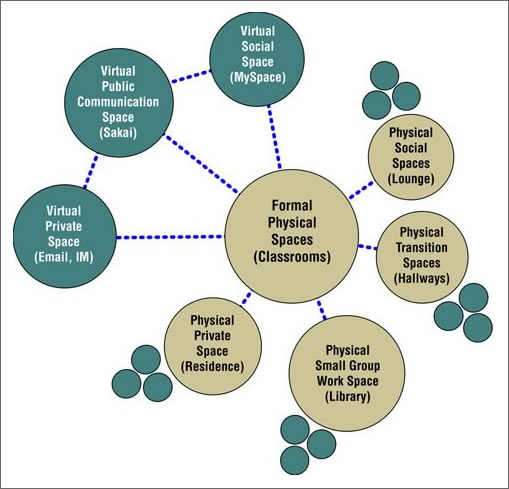
Designing for Experimentation and Innovation
Institutions are designing places for experimentation and innovation. Depending on the learning activity, a different combination of pedagogy, space, and technology might be optimal. Learning innovations that have improved student success, such as SCALE-UP (see chapter 29) and the Math Emporium at Virginia Tech (see chapter 42), resulted from experimentation. Others, such as Stanford's Wallenberg Hall (see chapter 36) and the Ohio State University's Digital Union (see chapter 31) set aside space for prototyping and experimentation. The presence of movable furniture, screens, and wireless controls makes it possible to experiment with just about any space.
Locating different disciplines (for example, fine arts and technology) in the same space can catalyze innovation and experimentation, as in the case of Denison University's MIX Lab (see chapter 16). In other cases, such as BOX at the London School of Economics (see chapter 23), the innovation comes from colocating academic and business personnel. Joint projects and problem solving encourage innovative thinking.
It is increasingly common—and necessary—for institutions to integrate experimentation into the overall design process. Years may pass between the time space planning begins and a facility's completion. In that time pedagogy and technology will change. And, with the lifespan of a facility exceeding 50 years and the half-life of many technologies being one to two years, flexibility and renewal must be an ongoing part of the design process.
Emerging patterns include:
- Setting aside space for experimentation
- Colocating different specialties in the same facility to stimulate innovation
- Displaying art work, exhibits, and artifacts to stimulate interest and creativity
- Using a portion of the budget for technology experimentation
Involving Users
Increasingly users—students, faculty, and staff—participate in learning space design. User perspectives are critical, as architects or facilities personnel may view space design quite differently. "In fact, 'expert' decisions are not necessarily better than 'lay' decisions," asserted Henry Sanoff. "Given the facts with which to make decisions, users can examine the available alternatives and choose among them."17 Completing the facility is not the end of the process, however; it must be adapted to changing needs. Sanoff concluded that "Those most directly involved with the product—the users—are best able to assume those tasks."
Users' involvement in ongoing maintenance and management might also be valuable. This involvement could be directly on committees or indirectly through surveys or interviews, such as at the Manuel Pacheco Integrated Learning Center at the University of Arizona (see chapter 37).
Emerging patterns include:
- Getting input from students on different types of spaces, such as through photo surveys, rather than through committee appointments
- Involving users in creating new designs
- Forming user councils that involve facilities, IT, academic affairs, faculty, and students
Innovative Vision Yields Innovative Outcomes
At a meeting in 2003, instructional technologists and the chairpersons of Denison's fine and performing arts departments (Studio Art and Art History, Cinema, Dance, Music, and Theatre) focused on digitizing the disciplines. Convinced of the importance of "creative computing" (the analog to research computing for the arts), the chairs and staff developed a proposal1 with an innovative vision to "blur distinctions among disciplines and build bridges among our departments for both students and faculty." The goal was to create new synergies among the five fine arts departments.
The faculty's innovative vision was for curricular synergy—a focus on a single, technologically-rich space to foster collaboration, learning, and interdisciplinary work for both students and faculty. Our institutional leaders committed space and funds to make the vision a reality. The instructional technologists carefully integrated a large array of hardware and software tools to meet the faculty's interdisciplinary goals.....
Faculty-directed student teams work together on joint projects and generate new work processes and relationships among the traditionally separated disciplines. Faculty also benefit from each other's experiences, talents, and skills. Throughout the day, faculty members from all five disciplines hold classes in the lab and give students hands-on opportunities to experiment with the new tools and equipment. When the lab is not being used for instruction, students, faculty, and staff from across the university can use the space for their own projects. The open design of the space invites individuals to work together comfortably on joint projects.
Transformed Space That Transforms the Curriculum
Marginal improvements to a space rarely change the teaching and learning practices that take place there. Transformational changes may change practices, but such broad, sweeping changes require a strong, shared vision and an institutional commitment to potentially high-risk projects. We often lower risks by working incrementally toward a shared vision, but incremental improvements (such as better seating or room color) neither alter our teaching practices and learning outcomes nor expand our thinking about what might be possible. Converting a nonacademic space into a learning space provides a unique opportunity to discover authentic learning outcomes that arise from learning space transformations.
The MIX Lab, a transformed space, has in turn transformed the fine arts curriculum. Interest in creative computing runs high, and faculty members have adopted collaboration as a best practice. New courses integrate the visual arts with music in new ways, while dance and theater performances showcase the products and processes derived from the MIX Lab. Ever more ambitious student projects require collaboration for success. Based on the MIX Lab model, the fine arts are planning a "Center for Collaboration in the Arts."
...
The MIX Lab is both the cause and effect of innovation, a transformed space that has transformed the curriculum. More than any other learning space at Denison, it has changed the way students and artists work and learn. The interdepartmental vision of a shared space has produced a successful technological learning space that has spawned greater aspirations for collaboration. The MIX Lab provides a unique example of how technology can break down barriers, promote new approaches to teaching and learning, and foster broad curricular transformation.
Chapter 28. FlyspaceHal Meeks
What Is It?
Figure 2. Simple Design with Whiteboards Everywhere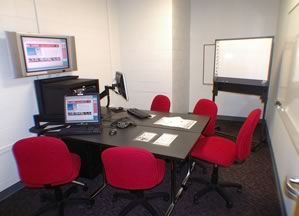
Flyspace is a simple design for a meeting space for five to six students. It is intended to be inexpensive, modular, and compact. Keeping room sizes small fosters an intimate area for collaboration and makes it more likely that other rooms can be built around a campus with chronic space shortages.
Dot-com startups inspired Flyspace. These companies grew so quickly that they couldn't house all their employees, sometimes replacing offices with laptops and an open room with lots of flat work spaces. Offices with doors were converted into scheduled spaces for client meetings, brainstorming, or simply a quiet space to work. This nontraditional use of space fostered creativity and collaboration among employees.
Flyspace offers just enough technology to foster collaboration; technology is not the main feature of these rooms. The emphasis is on flat work areas, including extensive use of whiteboards along all walls.
The basic technology infrastructure is inexpensive to build and expand. Flyspace uses a basic design consisting of two computers with displays mounted on articulated arms and connectivity (data, video, and audio) for four laptops. A large flat-panel display allows users to share their desktops with others. A centralized pod contains all data and power connectors for equipment in the room, making it easy to connect equipment and minimizing the cost of running conduit for data, media, and power. Wireless networking is also available. Students can make on-campus calls or report problems by phone, and the speakerphone makes it possible for off-campus students and faculty to participate in Flyspace meetings. Perhaps the most important feature of Flyspace is an open scheduling system that lets any registered student schedule a space for a meeting or group project. (See Figure 1.)
How Is Technology Used?
Flyspace facilitates collaboration, brainstorming, and various pursuits unlimited by rules on the rooms' use. An open, Web-based scheduling system lets users see if the space is available immediately, without having to authenticate, and they can schedule space without having to ask permission. Because every user in the room has access to the room-control system from his or her computer, seamless switching between participants is possible. No one person controls who has access to the screen; it is truly a collaborative experience. Moreover, the large amount of whiteboard space and markers allow students to brainstorm-with or without technology.
....A central piece of Flyspace is not the room itself but an open scheduling system.... Flyspace rooms show up as a campus resource that can be scheduled by anyone, whether student, staff, or faculty. Instead of using expensive videoconferencing hardware, Flyspace uses Web-based conferencing tools, which require less technology and align better with the ways students collaborate. An echo-canceling microphone connected to one computer allows everyone in the room to be heard; no expensive, dedicated videoconferencing equipment is needed.
Bob Davis and Denise Shorey
What Makes the Space Successful?
A number of features contribute to the area's success.
No boundaries: No barriers separate the InfoCommons from the main library corridor, yet the space successfully creates small enclaves of privacy in a completely open area. The InfoCommons provides spaces that allow students to work together-to solve problems, exchange ideas, and work collaboratively. The casual passerby can view activity and easily become part of it. Particularly in the booths (see Figure 4) and at the presentation stations, students remain unaware-or perhaps uncaring-of passersby, opening their lives and work to all who might see.
Figure 4. Enclaves of Privacy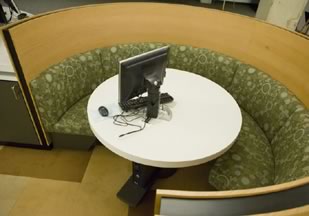
Challenging and changing cultures: The concept of a learning space such as the InfoCommons can challenge those with traditional views of "learning" and "space." Library staff accustomed to following long-established routes to their offices and departments through the busy InfoCommons, for example, now view it differently. The high visibility of the area's social and learning capability is often a new idea, especially for visitors and prospective students (who embrace it with enthusiasm).
A social space: The InfoCommons is a first stop for many students entering the library. (See Figure 5.) It offers a welcoming social environment where they engage in independent inquiry, participate in small group interactions, or sip coffee from the nearby café.
Figure 5. A First Stop for Many Students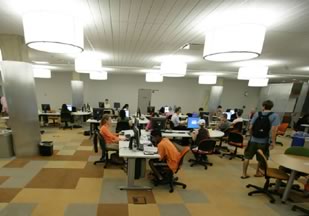
Informality: The project room was initially envisioned as a glassed-off formal conference room, complete with a large table surrounded by chairs, distinguishing it from the rest of the InfoCommons. By contrast, the room's actual success can be attributed to the shift away from this planned formality to a relaxed setting rich in technology that blends unobtrusively, versatile and comfortable chairs, and a surprisingly low "coffee table" with a wireless keyboard, data, and power ports-at the right height for feet. (See Figure 6.)
Friday, July 13, 2007
Lilliput 5" RV18-50NP rearview mirror tft lcd camera Case-Mod.com - Case Mods, Cases, Power Supplies, and Cooling for Home Theater and Gaming Systems

The screen is covered by a dual low-reflective glare mirror that diffuses light and maintains high contrast level of pictures day and night.
With its innovative design, the installation of this monitor is easy. The monitor can be hooked up to your existing rearview mirror without any modification and it can fit any size of rearview mirror without any problem.
Clear LCD display in development | Geek.com
When not in use, the crystals turn transparent; but when the TV is turned on, the crystals illuminate and allow a moving image to be displayed.
Wednesday, July 11, 2007
Tuesday, July 10, 2007
Sunday, July 08, 2007
Boat Shrinkwrap :: Covering a greenhouse or polytunnel with plastic shrink wrap film
The plastic shrink wrap film has UVI and EVA additives. The UVI (Ultra Violet Inhibitor) is designed to slow the deterioration of the shrink wrap in sunlight whilst the EVA helps prevent the shrnk wrap becoming brittle in low temperatures. Normally, if the shrink wrap is applied correctly, you should expect to get around 2 years life from your shrink-wrap plastic cover.
Saturday, July 07, 2007
Electromagnetic Field Shielding Fabrics
STRETCH CONDUCTIVE FABRIC
"All The Conductivity Of Silver With Lycra-Like Stretch"
 This medical grade Silver plated 92% Nylon 8% Dorlastan fabric offers the unique ability to stretch in both directions. Can be used as an antibacterial wound dressing (note: our material is not sterile) but it also makes a great material for electrode contacts, stretchy hats, socks, gloves, or other garments. Highly conductive, and conductivity decreases as it stretches. Very unique!
This medical grade Silver plated 92% Nylon 8% Dorlastan fabric offers the unique ability to stretch in both directions. Can be used as an antibacterial wound dressing (note: our material is not sterile) but it also makes a great material for electrode contacts, stretchy hats, socks, gloves, or other garments. Highly conductive, and conductivity decreases as it stretches. Very unique!
- Width: 135 cm wide (52 inches)
- Weight: 130 g/m²
- Thickness: 0.50 mm
- Stretch: ~100% in length direction; ~65% in width direction
- Surface resistivity is <1>
- Temperature range: -30 to 90°C
Stretch Conductive Fabric (Cat. #A251) …... $39.95 per lin ft ![]()
Is this the right time to attack Dingell? | Gristmill: The environmental news blog | Grist
also...
Al Gore
The individual who has done the most to raise the nation’s consciousness on climate change is an outspoken advocate for taxing carbon emissions. In a July 19, 2006 speech at Wal-Mart’s Bentonville, AR headquarters, Gore said, "We should sharply reduce payroll taxes and make it all up in CO2 taxes so the low- and middle-income people don’t bear the cost burden of this big transition in energy sources." Gore spoke in the same vein two months later at NYU Law School:
For the last fourteen years, I have advocated the elimination of all payroll taxes — including those for social security and unemployment compensation — and the replacement of that revenue in the form of pollution taxes — principally on CO2. The overall level of taxation would remain exactly the same. It would be, in other words, a revenue neutral tax swap. But, instead of discouraging businesses from hiring more employees, it would discourage business from producing more pollution.
In his remarks to Congress in March, 2007, Gore said "I fully understand that this [taxing the carbon content of fuels] is considered politically impossible, but part of our challenge is to expand the limits of what is possible." Reported by Greenwire. Gore’s 10 legislative recommendations, reported by Gristmill, are here.
...
Senator Christopher Dodd (D-Connecticut): Senator Dodd has called for a Corporate Carbon Tax, described as follows on his web site:
- Enact a Corporate Carbon Tax. A Corporate Carbon Tax will discourage big corporate polluters and stimulate innovation. The revenues of a corporate carbon tax—estimated at over $50 billion annually—will be placed into a Corporate Carbon Tax Trust Fund (CCTTF) to fund:
- Fast tracked research, development and deployment of renewable technologies such as wind, solar, as well as ethanol and other biofuels;
- Efforts to expedite the process for bringing energy efficient technologies to market.
Senator Dodd has the political courage to level with the American people that a tax on carbon is essential to curb global warming: "You have to have a price-driven strategy if you are going to succeed in this thing," Dodd said in an April 19 telephone interview with The Associated Press and picked up by MSNBC. "Otherwise, I’m afraid it’s just a lot of talk. People are trying to avoid the difficult decision." On May 31, Senator Dodd released a new television ad slated to run in Iowa and New Hampshire that promotes what he refers to as "a courageous Corporate Carbon Tax to transform American Industry." To see the new ad on You Tube, click here.
Congressman Pete Stark (D-CA) and Congressman Jim McDermott (D-Wash): Congressmen Stark and McDermott are the lead sponsors of the "Save Our Climate Act," which would impose a $10 per ton (of carbon) charge on coal, petroleum and natural gas when the fuel is either extracted or imported. The charge would increase by $10 every year until U.S. carbon dioxide emissions have dropped 80% from 1990 levels.
Rep. John Dingell, the senior member of Congress and chair of the House Energy and Commerce Committee: My own judgment is that we are going to have to adopt a cap-and-trade system and some form of carbon emission fee to achieve the reductions we need. (June 2007; see article in Gristmill for link and context.)
http://www.shelter-systems.com/lighthouse-30-31-manual.html
- Liner (Optional): The interior wall liner is installed after your dome is set up. Unroll the liner inside the dome. Locate the liner's center clip that is marked with a ribbon. Tie the string of this center clip to the top center ceiling clip of your dome. This is done
 by threading the string into one of the two holes and pulling the string back through the big center opening in the domes inner clip. This is easier if you use a tool like a crochet hook or a needle nose pliers to grip and pull it through.
by threading the string into one of the two holes and pulling the string back through the big center opening in the domes inner clip. This is easier if you use a tool like a crochet hook or a needle nose pliers to grip and pull it through.
Dome Insulation (they seem to know their stuff)
http://www.naturalspacesdomes.com/price_list/Summer07PL/28.pdf
r-foil and ruffrap
New TVM Customer Service Line is Here!
Telephone: 1.866.484.4TVM (886)
reflective insulation materials handbook http://www.rima.net/handbook/HandbookAll0504.pdf
aerogel insulation
| Sales Cabot Corporation Business & Technology Center | United States Address | Asia Pacific, North America, South America | +978-670-6239 +978-670-7045 | ||||||
| Technical Service Cabot Corporation Business & Technology Center | United States Address | Asia Pacific, North America, South America | +978-670-6239 +978 670-7045 |
| TVM Insulation | ||||
rFOIL™ RRR – Reflective Ruff Rap is the new generation of Reflective House Wraps! rFOIL™ Reflective Ruff Rap (RRR) represents the next generation in house wrap technology. This revolutionary new product offers the construction industry with a strong weather-resistant barrier, the added benefit of a Radiant Barrier, a tested R-3.8 value, and a Perm rating of 22. rFOIL™ RRR is a single layer of highly reflective metalized aluminum, laminated to a formulated blend of polyethylene and is pin perforated. This results in a house wrap that acts not only as a superior air infiltration barrier, but it also adds a radiant barrier to the exterior of the home, blocking up to 96% of radiant heat. This results in better year round efficiency and comfort levels. Also, unlike other house wraps or insulating products that are traditionally used, rFOIL™ RRR is non-toxic and it’s performance is not affected by extended exposure to the elements. | ||||
http://hometown.aol.com/domefabrication/page1.html
covering domes...
parachute for sale
- Dome Home Kits - infoSave - Cut Your Own Dome Kits Wood-Steel - Rigid Foam Insulationwww.domekits.info
http://www.zendome.de/cms/front_content.php?idcat=83
Zendome.75 set up incl. heavy load floor-system
http://www.energistx.com/spaces/domes.html
http://shelterstructures.com/advantages.htmlproduct video

http://www.tentnology.com/products/saddlespan/s5000/duospan#
